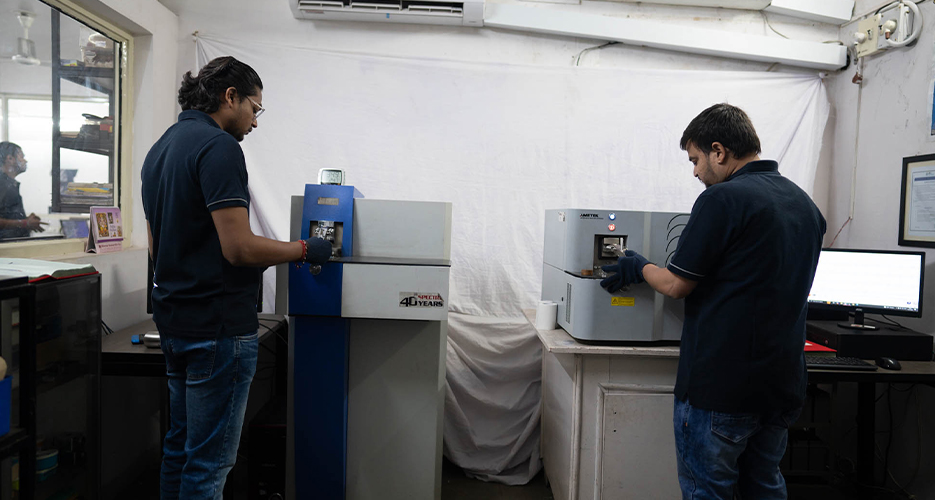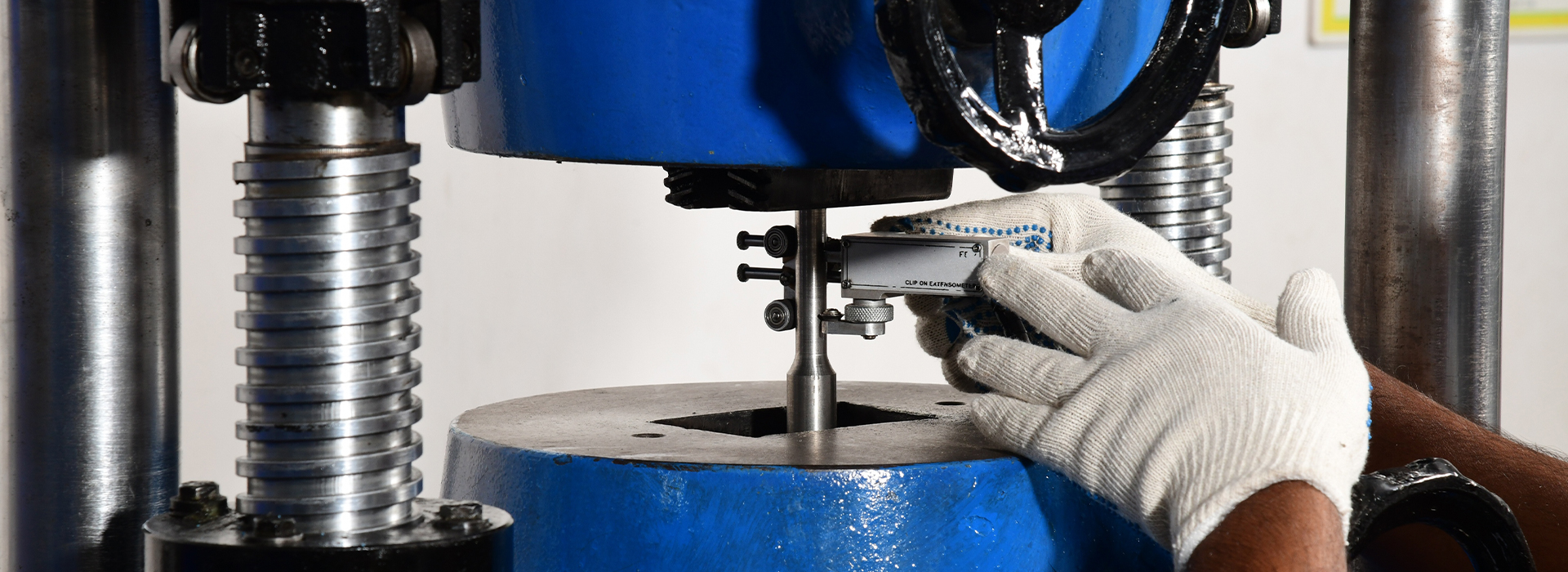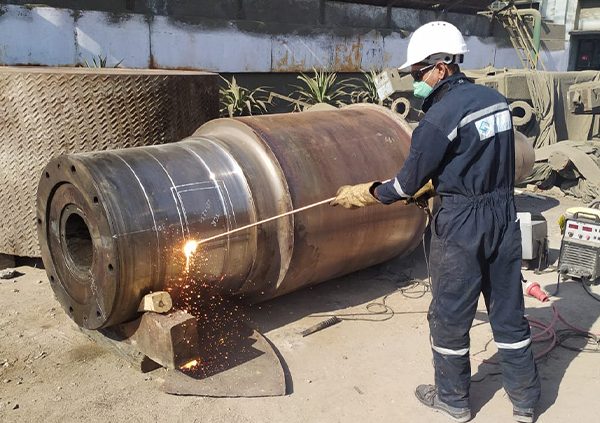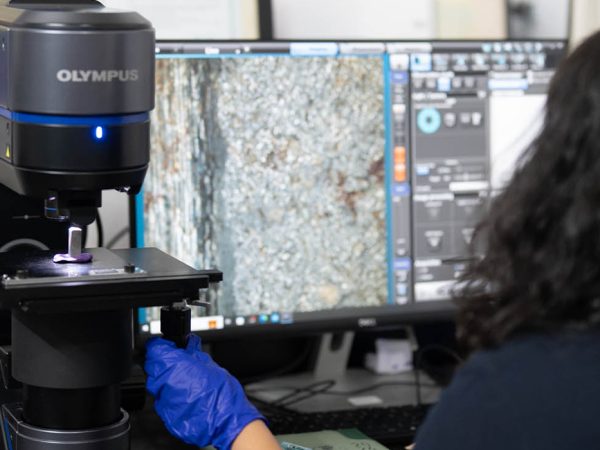In a competitive industrial landscape, where safety, performance, and durability are non-negotiable, material testing has become the cornerstone of quality assurance. From oil and gas to manufacturing, automotive, pharmaceuticals, and power generation, every industry relies on accurate testing to validate materials, certify processes, and ensure long-term reliability.
TCR Advanced is a trusted testing partner to many of the world’s most iconic and recognized brands across various sectors like oil and gas, petrochemical, manufacturing, power, fertilizer among many others. TCR Advanced has the most comprehensive range of material testing services and is known to offer emergency advisory and critical support in the testing of materials. TCR Advanced’s laboratories deliver exhaustive, inter-disciplinary services in the development, processing, characterization, and testing of all materials.
With industries facing increasing challenges—whether from environmental conditions, rising safety expectations, or stringent international standards—the role of accredited laboratories and advanced testing methods is more important than ever. Among these, NABL accredited material testing labs stand out as trusted partners, delivering scientifically precise, reliable, and globally recognized results.
This blog explores the critical importance of material testing, dives deep into the different types of testing services, and highlights how industries benefit from metallurgical, mechanical, chemical, and nondestructive testing methods.
What Is Materials Testing?
Material testing is the systematic process of evaluating the mechanical, chemical, and physical properties of metals, alloys, composites, glass, and other engineering materials. It determines how a material will perform under stress, heat, corrosion, or environmental factors.
The purpose of material testing is threefold:
1. Safety – Ensuring that a material will not fail unexpectedly under operational loads.
2. Reliability – Guaranteeing consistent performance over the intended lifespan.
3. Compliance – Meeting international standards like ASTM, IS, ASME, API, DIN, EN, and AWS.
Without rigorous testing, industries risk product failures, costly recalls, downtime, and in some cases, catastrophic accidents. This is why NABL accredited material testing labs are vital partners—they provide scientifically validated results recognized nationally and internationally.

Types of Materials Testing
Material testing covers a wide range of services that span different properties and applications. The major categories include:
- Mechanical Testing – Examines strength, hardness, toughness, ductility, and durability.
- Tensile Testing – Determines material strength, elongation, and proof stress.
- Hardness Testing – Measures resistance to indentation and wear.
- Metallurgical Testing – Studies microstructure, grain size, phases, and defects.
- Corrosion Testing – Evaluates resistance to chemical and environmental degradation.
- Chemical Testing – Determines composition and identifies metals & alloys.
- Nondestructive Testing (NDT) – Detects defects without damaging the material.
- Metallography Services – Used for microstructure analysis and heat-treatment validation.
Together, these testing methods ensure that a component or product is safe, durable, and fit for service in demanding industrial environments.
Mechanical Testing: Evaluating Strength and Durability
Mechanical testing is the backbone of material validation. It assesses how materials behave under stress and ensures that they can handle real-world operating conditions.
Tensile Testing
One of the most fundamental tests in material evaluation is tensile testing. This process measures how a material stretches and ultimately breaks under tension. By performing tensile testing, laboratories determine:
- Yield strength
- Ultimate tensile strength (UTS)
- Elongation percentage
- Modulus of elasticity
In industries such as power generation, oil & gas, and automotive, tensile testing is critical for certifying that metals and alloys meet design and safety codes.
Hardness Testing
Another key form of mechanical testing is hardness testing, which measures a material’s resistance to indentation and wear. Techniques such as Rockwell, Brinell, Vickers, and Micro Vickers provide reliable hardness profiles across metals and alloys.
Other Mechanical Tests
Additional mechanical testing methods include bend tests, compression tests, impact tests, and fatigue tests—all designed to simulate real-world stresses. Together, they ensure a component will remain reliable throughout its service life.
Metallurgical Testing: Unlocking the Microstructure
Where mechanical tests provide strength and toughness values, metallurgical testing dives into the microscopic world of materials. Through optical microscopy, scanning electron microscopy (SEM), and advanced metallography services, this testing analyzes:
- Grain size and orientation
- Phase distribution
- Inclusions and defects
- Heat-treatment quality
One of the most critical applications of metallurgical testing is in certifying heat treatment. While traditional hardness values may indicate acceptable results, they don’t reveal microstructural flaws. Unwanted phases, improper heat treatment, or uneven distributions can drastically shorten component life.
This is why metallography services and metallurgical testing play such a vital role. By analyzing fine structural details, engineers can certify that components are fit for extended service life—particularly in demanding industries like oil & gas, petrochemicals, and power plants.
Chemical Testing: Identifying Composition with Precision
Every material’s properties ultimately depend on its chemical composition. Chemical testing ensures that metals and alloys conform to required standards and specifications.
With advanced spectroanalysis techniques—like Optical Emission Spectroscopy (OES), wet chemistry, and use of certified reference materials—laboratories can accurately identify base materials like iron, copper, nickel, titanium, and aluminum alloys.
Chemical testing prevents the use of counterfeit or substandard materials, safeguarding industries such as pharmaceuticals, fabrication, automotive, and engineering procurement.
Corrosion Testing: Guarding Against Environmental Damage
One of the biggest threats to material performance is corrosion. Whether in marine environments, chemical processing plants, or power stations, corrosion can lead to costly failures.
Corrosion testing evaluates how materials react to various corrosive conditions, such as pitting, stress corrosion cracking, or intergranular corrosion. Standardized tests (ASTM A262, ASTM G48, ASTM A923, ASTM B117) are used to simulate real-world exposure and predict service life.
By integrating corrosion testing into quality control, industries minimize downtime, prevent accidents, and extend the lifespan of critical components.
Nondestructive Testing (NDT): Ensuring Safety Without Damage
For critical components, damaging the sample is not an option. This is where nondestructive testing (NDT) becomes invaluable.
NDT methods such as ultrasonic testing, radiography, magnetic particle inspection, and dye penetrant testing detect cracks, voids, and hidden defects without harming the material.
Industries like aerospace, oil & gas, EPC, and manufacturing rely on nondestructive testing (NDT) for real-time inspection, predictive maintenance, and failure prevention.
Industries We Serve
Material testing is not limited to a single sector—it underpins nearly every industrial domain. Some of the key industries that benefit include:
1. Power Generation Industry
In the power sector, materials are pushed to their limits. Turbines, boilers, pressure vessels, and pipelines operate under extreme temperatures, stress, and corrosive conditions.
Without regular material testing, the risk of cracks, leaks, or sudden breakdowns in power plants increases dramatically. By ensuring structural integrity, industries maintain efficiency and prevent blackouts or accidents.
2. Fertilizer Industry
Fertilizer plants use high-pressure vessels, reactors, and pipelines that are constantly exposed to corrosive chemicals and gases.
Here, material testing prevents leaks, contamination, and equipment failure, which could otherwise lead to safety hazards and production losses.
3. Chemical & Petrochemical Industry
This industry works with highly aggressive environments, where chemical reactions can quickly degrade materials if they are not properly validated.
Material testing in this sector is directly tied to worker safety, environmental protection, and compliance with global standards like ASTM, ASME, and API.
4. Oil & Gas Industry
The oil and gas sector is one of the most demanding environments for materials, with pipelines, drilling rigs, and offshore structures facing high pressure, salinity, and corrosion risks.
Given the high risk of oil spills, explosions, and operational downtime, NABL accredited material testing labs play a vital role in certifying material performance and ensuring compliance with safety regulations.
5. Insurance Sector
In the insurance industry, root cause failure analysis (RCFA) is critical to resolve claims and assess risks.
This ensures fair claim resolutions, prevents fraudulent claims, and helps companies implement preventive maintenance strategies for the future.
6. EPC & Fabrication Industry
Engineering Procurement and Construction (EPC) companies, as well as fabrication industries, need assured material quality before project execution.
Without testing, defects could go undetected, leading to structural failures, delays, and cost overruns in mega-projects.
7. Pharmaceutical Industry
In pharma manufacturing, materials must not only withstand operational stress but also meet strict hygienic and non-contamination standards.
Here, material testing safeguards product purity, regulatory compliance, and patient safety.
8. Manufacturing Industry
From consumer goods to industrial machinery, the manufacturing sector depends on consistent quality and performance of raw materials.
By embedding material testing into the quality control cycle, manufacturers reduce defects, optimize costs, and strengthen brand reputation.
9. Automobile Industry
In the automobile industry, where safety is paramount, material testing ensures reliability in critical components such as engines, gears, chassis, and welded joints.
Material testing in automobiles directly impacts driver safety, fuel efficiency, and product lifecycle. It helps manufacturers comply with international automotive safety standards.
Across all these industries, material testing ensures compliance, safety, and customer trust.
Why NABL Accredited Material Testing Labs Matter
Choosing a laboratory is as important as choosing the right material. NABL accredited material testing labs assure clients that testing is conducted according to ISO/IEC-17025:2017 standards, ensuring global recognition, reliability, and accuracy.
Accredited labs combine advanced facilities, subject matter expertise, and decades of experience to deliver dependable results. Whether it’s tensile testing, metallurgical testing, chemical testing, or nondestructive testing (NDT), clients know they’re receiving precise, accredited, and internationally compliant data.
Conclusion
From tensile testing to metallography services, from chemical testing to corrosion testing, and from mechanical testing to nondestructive testing (NDT), the world of material testing is vast yet vital. Industries across the globe depend on accurate, accredited, and reliable testing to ensure their products are safe, durable, and compliant with international standards.
By partnering with NABL accredited material testing labs, organizations gain more than test results—they gain confidence, compliance, and the assurance that every component they use or manufacture is fit for purpose.
Ultimately, material testing is not just a technical necessity; it’s a strategic investment in quality, reliability, and safety.







